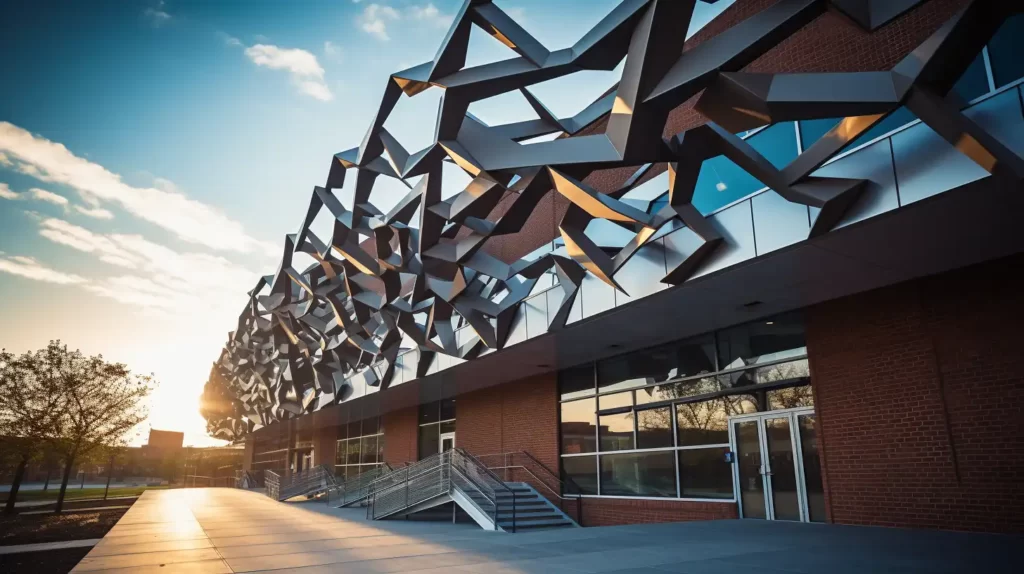Architectural metal fabrication for commercial buildings is a fascinating field that combines creativity, precision, and engineering. As cities grow and construction demands increase, the need for high-quality metalwork in commercial structures becomes more vital. These metal components are not just functional; they add aesthetic value and structural integrity to buildings.
Understanding the importance of architectural metal fabrication is crucial for anyone involved in the construction industry, especially those working with commercial properties. From skyscrapers to shopping malls, metal fabrication plays a key role in how buildings look and function. In this article, we will explore the various aspects of metal fabrication and how it is applied in commercial settings.

The Role of Metal Fabrication in Construction
Metal fabrication is essential in construction, providing the necessary support and design elements that make modern buildings possible. Commercial buildings often require custom metalwork to meet specific design and structural needs. This process involves cutting, shaping, and assembling metal materials to create the desired architectural features.
Types of Metals Used
Different types of metals are used in fabrication, including steel, aluminum, and copper. Each metal has its unique properties, making it suitable for various applications. For instance, steel is known for its strength and durability, while aluminum is lightweight and resistant to corrosion.
Fabrication Techniques
Various techniques are used in metal fabrication, such as welding, cutting, and bending. These methods allow fabricators to create intricate designs and ensure that the metal components fit perfectly within a building’s architecture.
Benefits of Architectural Metal Fabrication
Utilizing metal fabrication in commercial buildings offers numerous advantages. Firstly, metal structures are incredibly durable, providing long-lasting support. Additionally, metal can be recycled, making it an environmentally friendly option for construction projects.
Customization and Design Flexibility
One of the most appealing aspects of metal fabrication is the ability to customize designs. Fabricators can create unique architectural elements that enhance the aesthetic appeal of a building. This flexibility allows architects and designers to bring their visions to life.
Cost-Effectiveness
Although metal fabrication can be a significant investment initially, it often proves cost-effective in the long run. Metal structures require less maintenance and have a longer lifespan compared to other materials.
Applications of Metal Fabrication in Commercial Buildings
Architectural metal fabrication is used in various applications within commercial buildings. From structural components to decorative elements, metalwork is integral in modern architecture.
Structural Components
Metal fabrication is commonly used for structural components, such as beams and columns. These elements provide the necessary support for large commercial buildings, ensuring stability and safety.
Decorative Elements
In addition to structural uses, metal is often used for decorative purposes. This includes intricate facades, railings, and sculptures that add a unique touch to a building’s design.
Challenges in Metal Fabrication
While metal fabrication offers many benefits, it also presents challenges. Ensuring precision and quality in fabrication requires skilled labor and state-of-the-art equipment. Additionally, working with metal can be labor-intensive and requires strict safety measures.
Quality Control
Maintaining high quality is crucial in metal fabrication. Fabricators must adhere to strict standards to ensure that the metal components meet the required specifications and safety regulations.
Skilled Workforce
The demand for skilled workers in metal fabrication is high. Fabricators must possess a deep understanding of metals and fabrication techniques to produce high-quality work.
Future of Metal Fabrication in Commercial Buildings
The future of architectural metal fabrication looks promising, with advancements in technology driving innovation in the field. New materials and techniques are being developed to make metal fabrication more efficient and sustainable.
Technological Advancements
Technology plays a significant role in the evolution of metal fabrication. Advanced machinery and software are enabling more precise and efficient production processes, leading to higher quality outcomes.
Sustainability
As sustainability becomes a priority in construction, metal fabrication is evolving to meet these demands. Recycled metals and eco-friendly production methods are being explored to reduce the environmental impact of fabrication.
Conclusion
In conclusion, architectural metal fabrication for commercial buildings is a vital aspect of modern construction. Its ability to provide durable, customizable, and aesthetically pleasing components makes it an indispensable part of the industry. As technology continues to advance, the possibilities within metal fabrication are expanding, promising a bright future for commercial architecture.
For more information on metal fabrication techniques, you can visit All Metals Fab. Additionally, learn more about the differences between structural and architectural steel fabrication at FEM Ltd.
Interested in modern metalwork designs? Check out Modern Designs or learn how to choose the right fabricator at Choose Fabricator.

FAQs
What is architectural metal fabrication?
Architectural metal fabrication involves creating metal components for buildings, focusing on both structural and aesthetic aspects.
Why is metal fabrication important in commercial buildings?
Metal fabrication provides the necessary strength, durability, and design flexibility for commercial structures, making it a crucial part of modern construction.
What are common metals used in fabrication?
Common metals include steel, aluminum, and copper, each offering unique properties suited for different applications in construction.
This article contains affiliate links. We may earn a commission at no extra cost to you.

